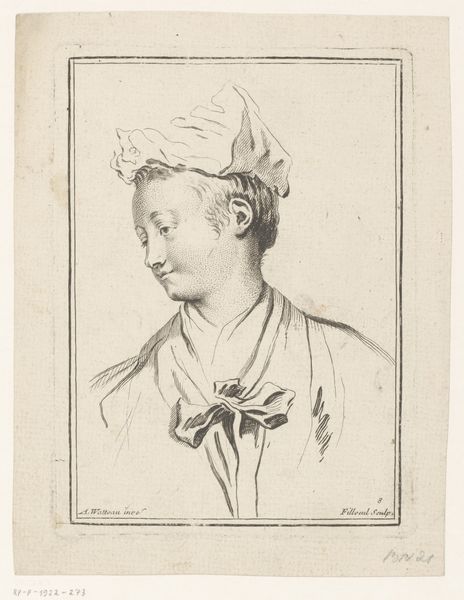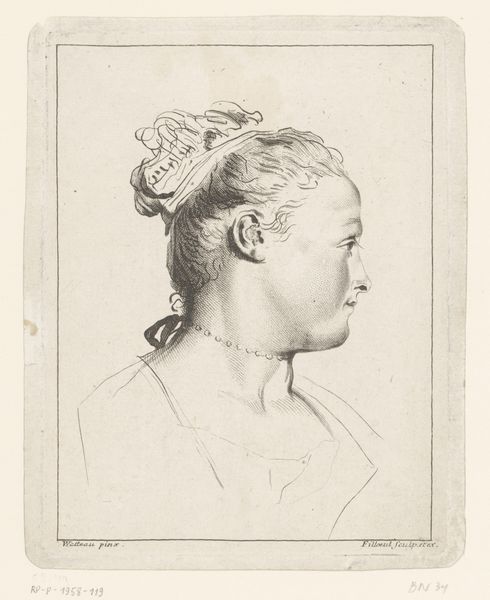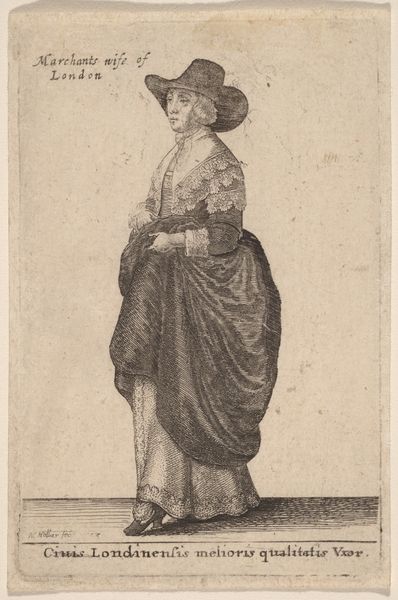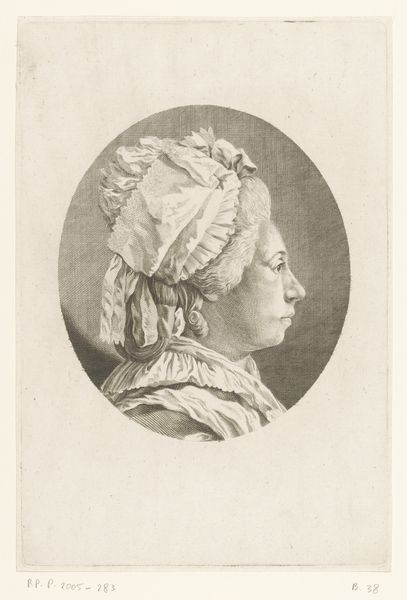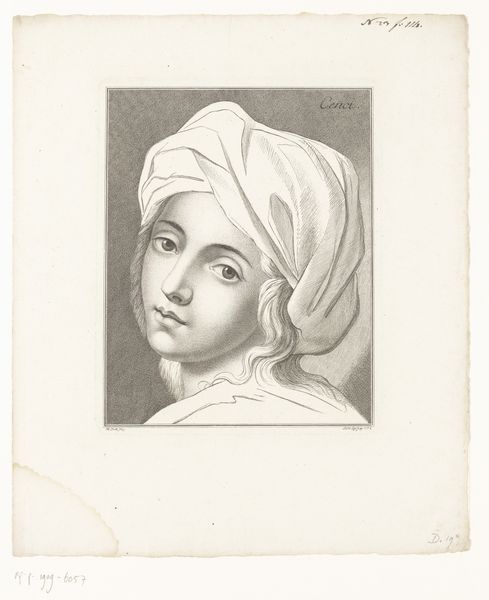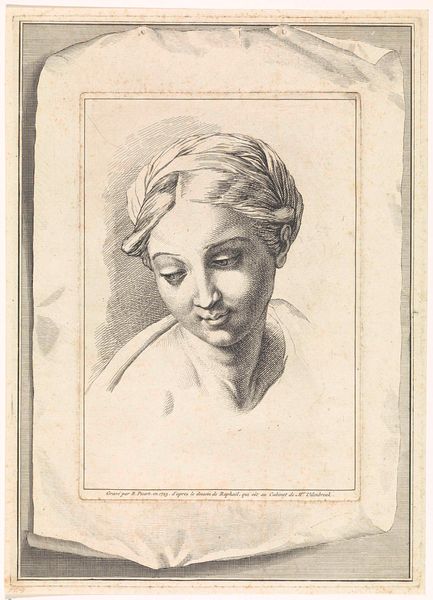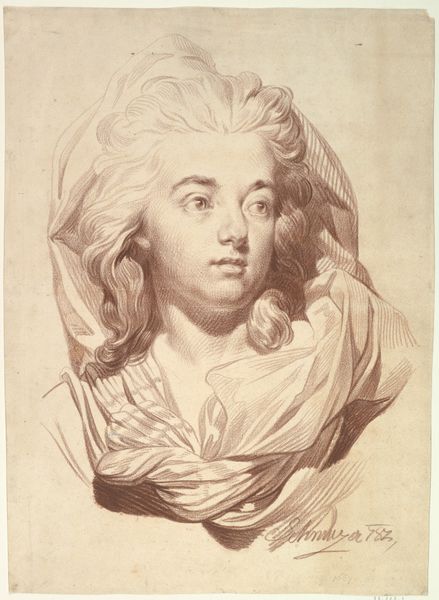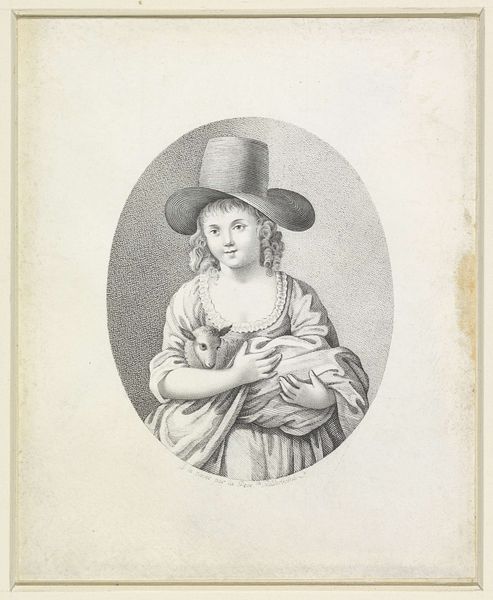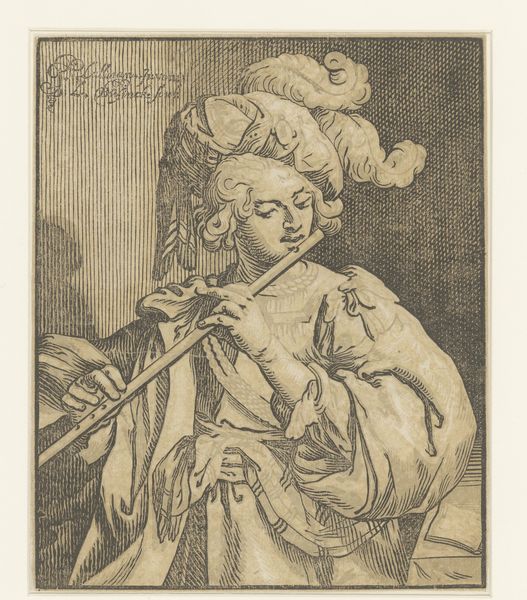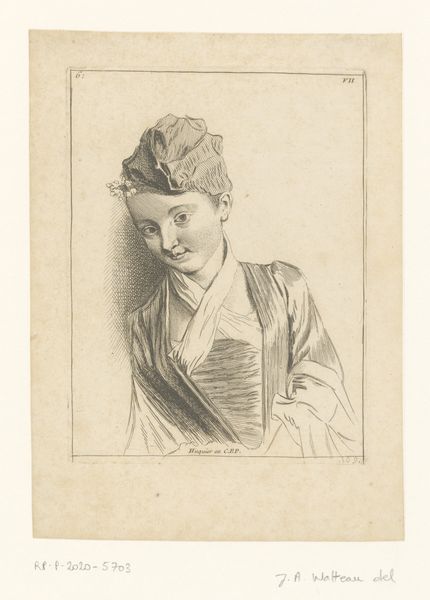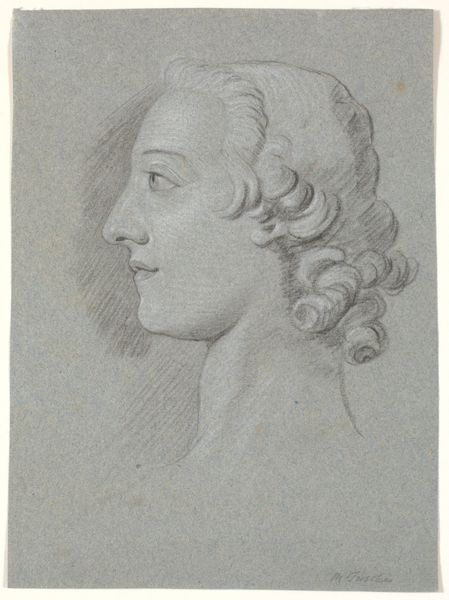
engraving
#
portrait
#
baroque
#
engraving
Dimensions: height 170 mm, width 123 mm
Copyright: Rijks Museum: Open Domain
Curator: I’m drawn to the quiet melancholy in this engraving; there’s an intimacy despite it being of an unknown sitter. What are your first impressions? Editor: It's incredibly detailed, especially for an engraving. The fine lines create subtle gradations, suggesting the texture of the woman's skin and the fabric of her clothing. There is a sense of sadness or reflection but also an almost stylized performance of that sadness, I feel like the hat, placed as it is, reinforces the melancholy feeling of the image. Curator: Indeed, it captures the Baroque sensibility well. The artwork, known as "Portret van een onbekende vrouw", meaning Portrait of an Unknown Woman, was created around 1734 by Pierre Filloeul. Although his style adheres to Baroque aesthetics, his influence also reflected aspects of rococo art popular in France during the same time period. We know that Antoine Watteau designed the original, so that should tell us something about his influences as well. The artist had an active presence at a time of enormous social change and revolution within France and Europe at large. I imagine such tumultuous upheaval trickled into his art and practice, even unconsciously. Editor: You're right, the societal context is essential. This was a period where aristocratic patronage shaped artistic production, and the visual representation of women often reinforced social hierarchies. Although, admittedly this piece deviates to some degree because, after all, we do not know who the sitter is and therefore we can’t use the portrait to talk about nobility or royal lineage, but perhaps it is precisely through this type of visual representation that artists during that time reflected upon a reality where women didn’t necessarily have the public visibility and opportunities that they ought to. In fact, as a piece, I do think the engraving asks important questions on issues of female visibility in art. I keep coming back to this piece as something of an anomaly that encourages dialogue. Curator: Perhaps it speaks to the complex relationship between art and its social functions at that time, also revealing more generally some enduring aspects of art’s agency within society at large. It definitely prompts further conversation about how women, both known and unknown, were and continue to be represented in art. Editor: Absolutely, thinking through those aspects together helps in teasing apart what the politics of image production really meant in the past and now.
Comments
No comments
Be the first to comment and join the conversation on the ultimate creative platform.
